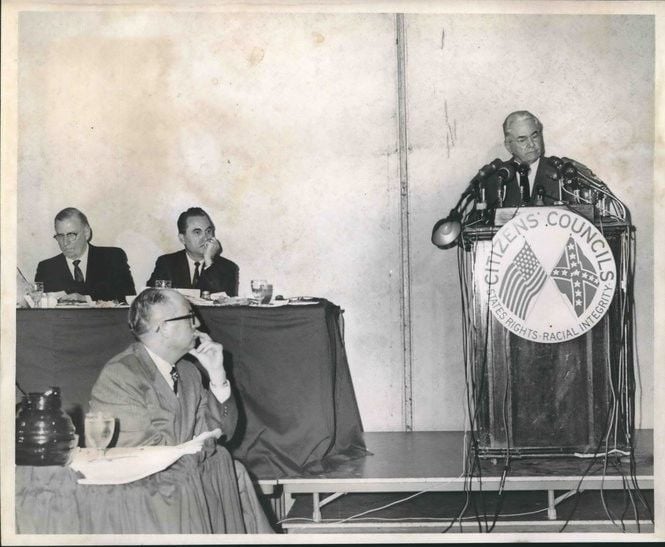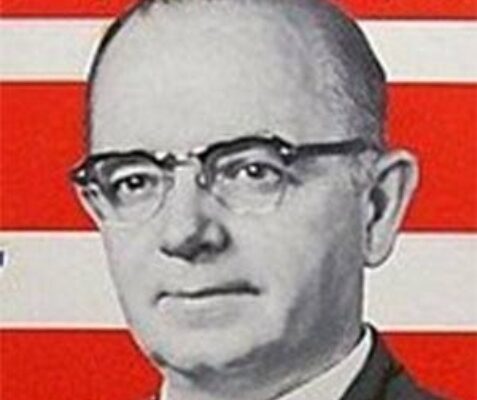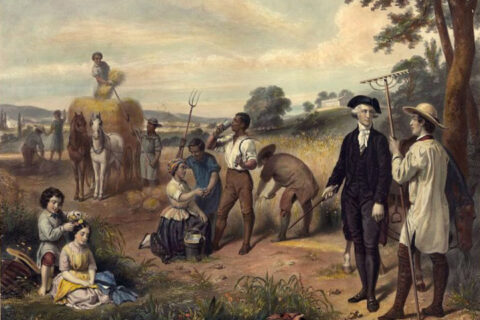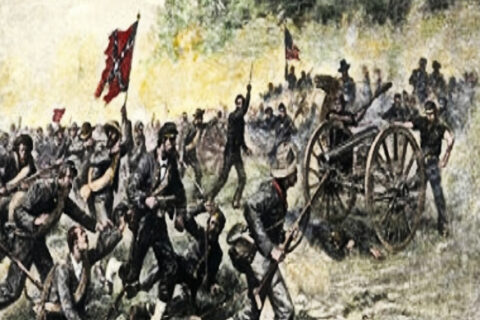Author’s Preface: Having previously covered and analyzed the history of the blue collar Ku Klux Klan, I have seen fit to now summarize and analyze the history of the white collar side of Southern resistance to federal tyranny and the race issue, the other side of the coin if you will. As with the Ku Klux essay, the group’s mentioned here are not endorsed.
The current controversy and removal of Confederate imagery extends further and deeper than the general populace realizes. As per the propaganda of contemporary media, Ku Klux organizations typically receive the brunt of the reasoning behind the removal of Southern symbols and statues from the public. However, the Ku Klux Klan operated primarily, within the Reconstruction Era and Civil Rights Movement that is, by providing a platform for forgotten blue collar whites to express contempt for and manifest a resistance to the socio-political situations they often involuntarily found themselves in. However, the vastly more effective means of resistance lied within the machinations of white collar Southerners. From Democratic alliances in Reconstruction to the Dixiecrat Party to the Citizens’ Councils, white collar methods found greater support and larger numbers. This essay will list and analyze the various organizations these more affluent Southerners utilized in order to pose a means of effective hindrance or defiance to federal tyranny.
Considering the socio-economic circumstances of Reconstruction, resistance to Radicalism often lacked the charismatic charm of white collar civility. Excepting the state level reformations of Democratic Parties of the 1870s and the Red Shirt movements of Mississippi and South Carolina, the Knights of the White Camelia rose as the only notable organization to utilize much white collar activity. Primarily consisting of Planters in the lowland, especially in Louisiana and the Gulf Coast, this group actually managed to spread across the Deep South, reaching as far east as South Carolina and as far west as Waco, Texas. It had a fully written prescript and rituals and also held a convention in 1870. Bizarrely, historians, save possibly Walter Lynwood Fleming, focused little on this group, and it currently falls into abject obscurity, despite having quite a bit of success politically and socially in Louisiana.
Moving forward to the politically tumultuous 20th Century, the Byrd Organization functioned as a powerful political machine which controlled the political whim of the Old Dominion during much of the 1890s through the 1960s, mostly under the tutelage of Harry Byrd Sr. Forming arguably in 1890, “The Organization” ensured Democratic control of the Commonwealth, operating as a network of Democrats across Virginia. Harry Byrd Sr.’s rise to the governorship in 1925 led to his seizing of the reins and transforming the networks into the Byrd Organization. Working through this newfound resource and his own political craftiness, Byrd reorganized much of the existing political apparatus and worked diligently to improve taxes, spending, and infrastructure.
Following his successful gubernatorial tenure, Byrd continued to control the Byrd Machine even upon entering the Unites States Senate, where he led the Conservative Coalition during the 1930s, 1940s, and 1950s. Utilizing this network of courthouse cliques and local officials, mostly in rural areas, Senator Byrd began the infamous “Massive Resistance” movement against the integration of public spaces following World War II. Massive Resistance’s legacy necessitates an essay of its own, but it is worth mentioning here the magnitude of its effect. The Byrd Machine managed to bring about a temporary end to public school attendance and functionality, with some even shutting down completely. Only providing a state level example, white collar resistance also permeated at the federal level.
The States’ Rights Democratic Party posed the greatest threat to the Democratic Party’s Solid South than any previous movement or attempt at dissent in presidential elections. Being the first instance in which breaking party loyalty in the South effected any real acceptance, the Dixiecrat Party formed in 1948 as a reaction against the Communist influences within National Democratic Party and Harry Truman’s selection as the presidential candidate of that year. Working diligently to build connections within the political networks at the state level, the Dixiecrats faced stiff opposition and an uphill battle. Successful in winning the electoral votes of Mississippi, Louisiana, South Carolina, and Alabama, the party, though unsuccessful in their presidential machinations, broke the Democratic hold on the South. Never again did Dixie vote solidly for the Democrat presidential nominee in an election.
The 1950s continued the growing Southern political resistance to Communist administration. Beginning with the Brown v Board of Education ruling of 1954, reactions and outcries rang loud in Congress and in governors’ mansions. A number of governors refused to integrate public schools. Allan Shivers of Texas blatantly disobeyed an integration order in 1954, and Mississippi did not integrate her schools until 1968, with the segregation clause of its state constitution remaining until 1978. At the federal level, a number of Southern congressmen signed the Southern Manifesto, and many began giving superlative speeches in opposition on the capital floor. Senator Strom Thurmond gave the longest filibuster in history, lasting 24 hours and 18 minutes, in 1957 and signed the Southern Manifesto. Representative John Bell Williams, 19 year representative and Governor of Mississippi from 1968 to 1972 and previously having supported the Dixiecrats, gave the Black Monday speech in 1954 and also gave the prodigious “Interposition: The Barrier Against Tyranny” speech in 1956. While more resistance followed during the 1960s, primarily in the Deep South, the greatest political opposition manifested during the 1940s and 1950s.
Citizens’ Councils of America stood as the white collar equivalent to the Klan. Founded as a reactive front opposed to the Brown v Board ruling, the Citizens’ Councils spread rapidly across the South, with their strongest presence in the Deep South. Beginning in the Mississippi Delta in July 1954, the Citizens’ Council provided a funded means for upstanding Caucasian citizens to resist the legislative overstepping of the government, both state and federal. By 1956, the groups began spreading beyond simply Mississippi, reaching Louisiana, Georgia, Arkansas, and Alabama, and they drew the support and open endorsement of sitting political figures. It would additionally publish a successful magazine, The Citizen, for many years and worked painstakingly within gubernatorial elections. However, its advocacy of sophisticated Caucasian resistance set it at odds with the Ku Klux Klan and also alienated several, primarily blue collar, members. Asa Carter would even split from the Alabama chapter and form his own original Ku Klux Klan of the Confederacy as a result. Fortunately for the Councils, their sophisticated approach worked to greater effect than did the violent practices of belligerent Klansmen. Despite relentless work and progress, the passing of the Civil Rights Acts during the 1960s resulted in Citizens’ Councils being moribund and totally non-existent by 1973.

The Citizens’ Councils would reform as the Council of Conservative Citizens in 1985. Rebranding as a new paleoconservative organization to battle the cultural and demographic liberalism of the day through the lens of true conservatism, the group received much of its beginning support and members from the defunct Citizens’ Councils. Never amounting to the same level of influence as its predecessor, the Council did once hold membership of a number of politicians and high profile political commentators. A number of Mississippi politicians were members, even in to the 2010s, and several figures from across the South gave speeches at conventions or endorsed the organization. Both Trent Lott and Lester Maddox had both been members at one point or another, and many of the known attendees of meetings were Haley Barbour, Roger Wicker, Mike Huckabee, George Wallace Jr, and several others. At its peak, the Council had 34 members in the Mississippi legislature.
Unfortunately, the Council all but collapsed at the beginning of the Fourth Reconstruction. As a result of the actions of Dylan Roof in 2015, the Council’s membership plummeted, and many former members now dissociate themselves from their pasts, often relegating them to secrecy and overreaching liberalism. Much like the aforementioned Citizens’ Councils, the sophisticated approach to influence did not save the Council from a visage of repugnance during the newly begun Reconstruction. The last truly powerful force standing against the Establishment remains all but wholly defunct.
A handful of Southerners resisted in one form or another found temporary success at the local level after the Civil Rights Era concluded. Other than the Council, most operated locally. Once such example rose to prominence in the late 1980s. Forsyth County, Georgia drew the ire of the national spotlight for standing against an influx of diversity and demanding the right to stay an all Caucasian county. Known for its longtime stance as a conservative area hostile to outsiders and liberal ideals, the population influx during the 20th century, as a result of residents leaving nearby cities, led to the attention. In January 1987, civil rights demonstrators, believing themselves on the precipice of an easy victory, demonstrated in Cumming, Georgia but were amazed at the significant turnout of thousands of counter-protestors, both sides composed primarily of individuals from outside the county. The demonstration was the largest civil rights related incident since 1970, resulting in $670,000 of overtime pay for police which infuriated local residents. The media frenzy eventually subsided, and over the years, the county began embracing more diversity. Easily the most infamous of these instances, individual moments such as this one remained the only lasting instances of white resistance, most of which ended in failure. Another noteworthy endeavor was the Southern Partisan magazine, it, unfortunately, no longer exists but provided a Southern perspective on society and politics, with a modicum of success, for several generations.
White collar resistance to federal tyranny often resulted in greater success than the blue collar counterpart. Upon further analysis, affluent individuals preferred sophistication and abstinence from violent and lawless acts, producing more open endorsement from leading figures and greater support from the general public. Unfortunately, Southerners no longer understand the relationship between effective resistance and sophisticated activism; additionally, they prefer to entertain themselves and complain about the backstabbing nature of political figures, as well as, stab their own peers in the back. Many only believe violent resistance, a losing strategy, exists and often prefer not to participate in it, unaware of the far more successful nature of networking, finances, and political influence. Regardless, the nature of resistance to tyranny manifested in a multifaceted way, with multiple approaches attempting to address a problem, yet the mainstream narrative focuses on the more bestial route whites took, most likely as a means of preventing the illumination of the best path for their opposition to take.
“The White people of the South are the greatest minority in this nation. They deserve consideration and understanding instead of the persecution of twisted propaganda.” –Strom Thurmond






“Many only believe violent resistance, a losing strategy, exists and often prefer not to participate in it, unaware of the far more successful nature of networking, finances, and political influence.”
*Bump
Now, after the apes and wiggers have stormed through white neighborhoods doing what apes and wiggers do … many many of the above mentioned sheeple will be open to the concept of an all white 2nd Confederacy. It’s up to writers like you to get it going.
I highly recommend these links for the truth about race from a traditional Southern viewpoint. Today’s contemporary SN movement overwhelmingly has been highjacked by people with a WN worldview and views that are not consistent with traditional Southern worldview. The Old South did not have a concrete racial determinist view. There was flexibility with the social hierarchy in the pre-Reconstruction South. The federal government via Yankee occupation forced the segregation of the races in the South. The Old South was integrated and had the Confederacy won it would have maintained integration in a multi-racial society though still with a hierarchy. I have yet to hear these truths on this site because of your WN bent. It’s actually sad. Educate yourself with the podcasts and links.
https://www.abbevilleinstitute.org/lectures/what-was-the-construction-in-reconstruction-by-eric-richardson/
https://www.abbevilleinstitute.org/lectures/the-victors-definition-of-race-how-radical-reconstruction-divided-southern-society-along-the-color-line-by-eric-richardson/
https://www.abbevilleinstitute.org/blog/the-strange-career-of-segregation/
https://youtu.be/PHT6T-nyNfE
https://shotwellpublishing.com/catalogue/segregation/
I will definitely check these out. Abbeville always makes great content.
True. Blacks were closely connected to Dixians in the past; especially those of the Deep Southern strain. What do they benefit us going forward?